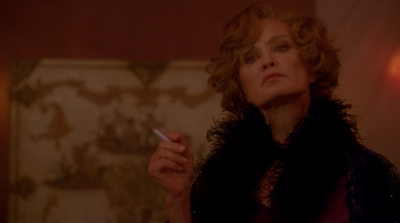 Since the release of La La Land (2016), articles and videos have circulated the internet naming the numerous film references dotted throughout the picture. Being a musical and a homage to musicals from the golden age of Hollywood, one expected to see inspiration from classics such as Singin' in the Rain (1952) and An American in Paris (1951) at least, but what the makers of LLL have done is incorporate so much more. Not just references from musicals but from other classic films and even modern musical successes.
Since the release of La La Land (2016), articles and videos have circulated the internet naming the numerous film references dotted throughout the picture. Being a musical and a homage to musicals from the golden age of Hollywood, one expected to see inspiration from classics such as Singin' in the Rain (1952) and An American in Paris (1951) at least, but what the makers of LLL have done is incorporate so much more. Not just references from musicals but from other classic films and even modern musical successes.Personally I did enjoy La La Land. It is a stunning picture to behold with a lovely score, and a charming tribute to the classic Hollywood musical. My main issue with the film was the songs: I didn't leave the cinema with the songs in my head and I wasn't humming them the following day or searching for them online (usually a sure sign of whether the songs are stand-out). The score itself is gorgeous, but with the exception of 'City of Stars', lyrically I feel the songs aren't catchy or memorable enough. Also the story itself falls a little flat halfway through but I felt the ending saved it. Stone and Gosling were strong leads (minus perhaps Gosling's singing). With everyone raving about the film I was expecting it to be much more disappointing, however, it was better than I expected. I'd definitely recommend it to anyone who enjoys musicals, it's certainly enjoyable and has a feel-good vibe. Is it the masterpiece that critics are hailing though? I wouldn't say so, not by a long shot, but it does treat viewers to some sumptuous imagery. No doubt it will win many of the awards it is nominated for this season - if there's two things Hollywood loves to reward it's 1.) films about Hollywood, and 2.) films that make Hollywood look good.
Here are some of my favourite references that can be found in Damien Chazelle's, La La Land:
Vertigo (Alfred Hitchcock, 1958)
One of my favourite films, Vertigo is spellbinding in so many ways and Hitchcock loves using colour/lighting to create the mood in his films. The scene in question here is in the hotel room where Jimmy's Stewart's character is waiting for Kim Novak's transformation - where the light from a green neon sign outside filters softly into the room creating an eerie and ominous feeling. LLL uses the same green lighting to great effect - both drawing us in and warning us of impending trouble in a less creepy/sinister situation but still a serious/unpleasant one.
It's a Wonderful Life (Frank Capra, 1946)
Another film starring James Stewart, (maybe Chazelle is a fan of him too). This one hasn't been confirmed and I've yet to see anyone else point it out, but this scene where we see a struggling Seb get fired at Christmas reminded me of George Bailey's Christmas Eve breakdown in It's a Wonderful Life. Both characters are filmed with their hair dishevelled, looking exhausted, spent, and helpless, and having hit rock bottom in a bar at Christmas.
An American in Paris (Vincente Minnelli, 1951)
There are multiple times in which LLL references this Gene Kelly classic. The legendary ballet sequence was a triumph in cinema and the peak of both Kelly and Vincente Minnelli's artistic geniuses. In the film, Kelly plays a painter in Paris, and so they use a rustic, French-style painting background for the majority of the ballet sequence. It gives off a dreamy and romantic ambience, which is another reason I assume LLL uses it in this particular scene. The same scene also reminds me of the 'Love Is Here To Stay' number which Kelly performs with Leslie Caron next to the River Seine.
Broadway Melody of 1940 (Norman Tauroug, 1940)
It's amazing how much something so simple as a dark background, twinkling lights, and a shiny floor to mirror it all can create such a magical setting. LLL uses it as the backdrop for the perfect first date and it has to undeniably be inspired by the 'Begin the Beguine' number performed by Fred Astaire and Eleanor Powell in Broadway Melody of 1940. It's a stunning setting and showcases both dancers dramatically. Even when Astaire and Powell have other performers and musicians in the scene sporadically, it feels like they are the only souls in the world. That's the feeling LLL captures in the scene with Stone and Gosling, swirling and twirling in a galaxy of stars.


























































